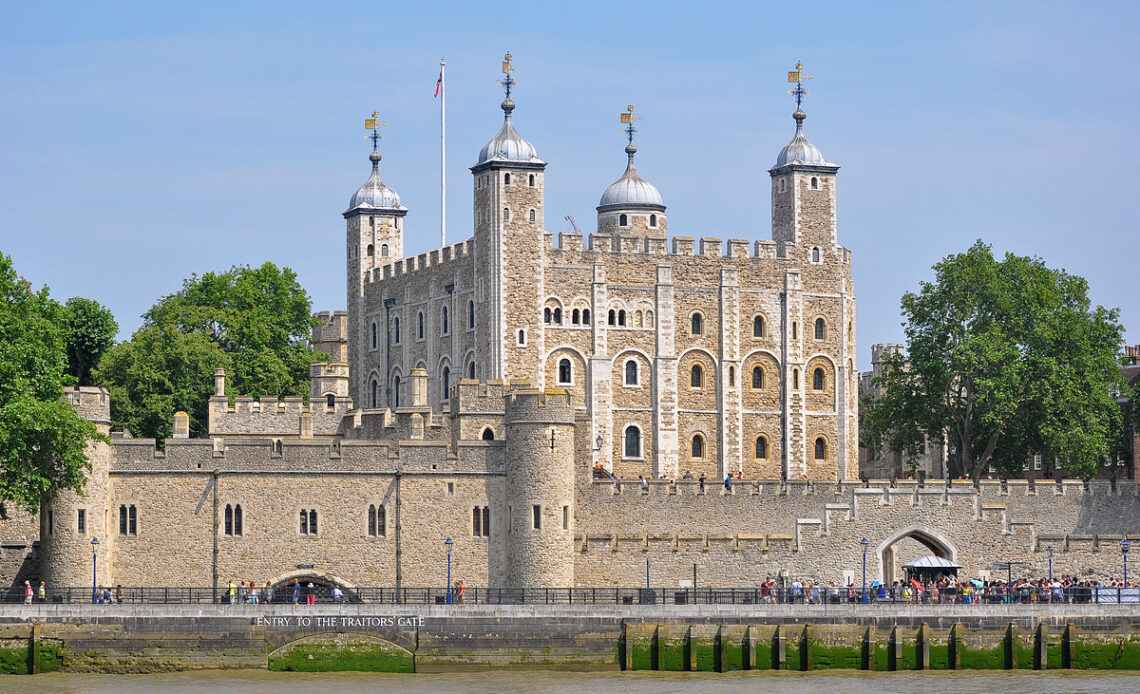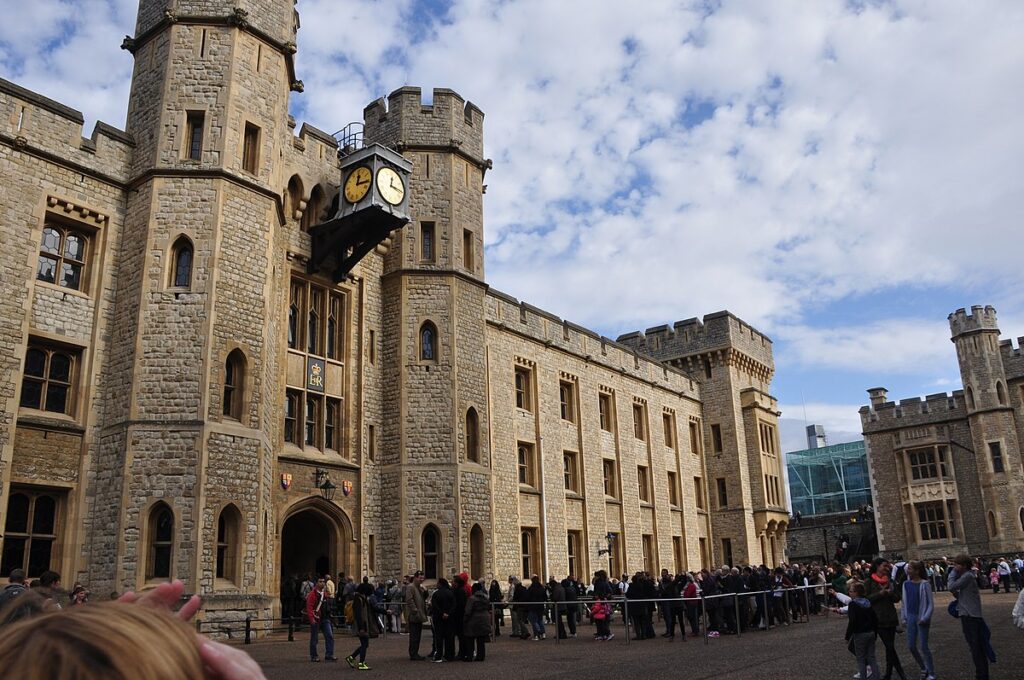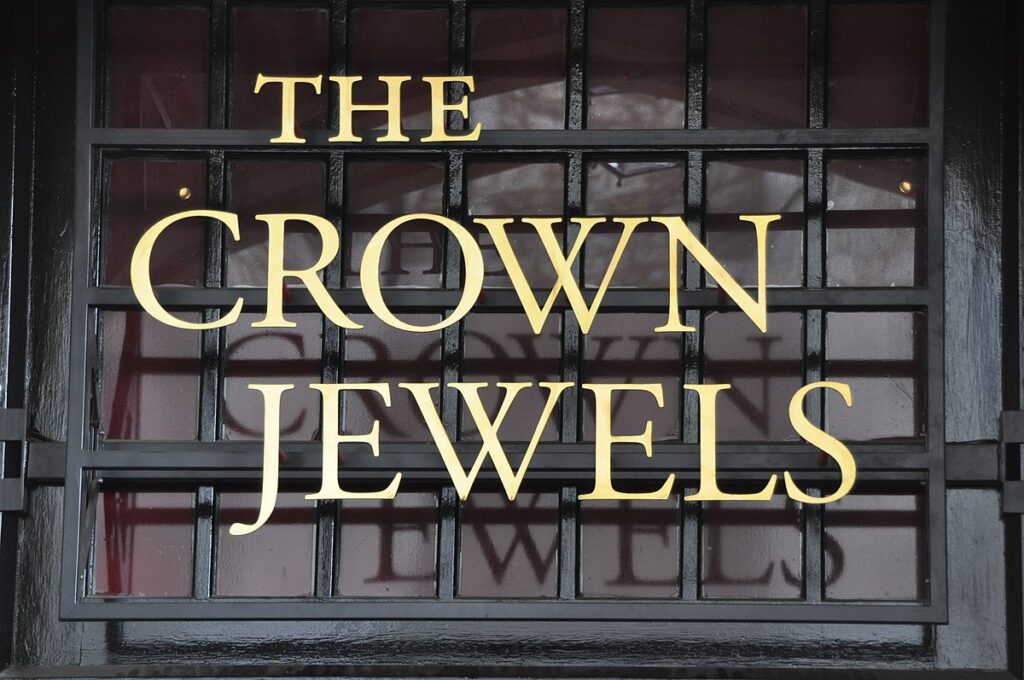
It was built as a fortress by the first king to be crowned at Westminster Abbey and now, almost 1,000 years on, it is world famous as the place where the Coronation regalia are usually kept. The Crown Jewels and the Tower of London are forever linked together.
They are kept in the Jewel House at the Tower and while visitors now see all the usual vestiges of tourism around the building, from queues of spectators to ice cream stalls, these precious gems are heavily guarded. They are kept under watch by the Yeoman of the Guard.
However, this Jewel House is relatively modern. The most historically complete royal regalia in the world is now housed in the Waterloo Block at the Tower which was built in 1845 as a barracks. However, the gems didn’t move there until well into the reign of Queen Elizabeth II.

The Crown Jewels had been kept in various parts of the Tower of London through their history and from the 17th century, people could pay to see them. However, tourism really took off in the 20th century and so many visitors were turning up that a bigger space was needed. The Crown Jewels were moved into the Waterloo Block in 1967, many of them displayed in an underground vault.
As visitor numbers continued to grow, a new Jewel House was created on the ground floor of the barracks and opened by Queen Elizabeth II in 1994. By the time of her Diamond Jubilee, in 2012, it had been revamped again, with the Princess Royal unveiling the new display which now features the regalia in the order they are used in the ceremony.

(by Lewis Clarke, CC BY-SA 2.0. Wiki Commons)
On show are some of the most famous jewels in the world including the crowns, the orb and sceptre, swords, the ampulla and the Coronation spoon, the oldest item in the collection. Many of the famous pieces are ”modern” version of ancient items – some of the Crown Jewels were destroyed under Oliver Cromwell following the fall of the Monarchy in 1649. On its Restoration under Charles II, in 1660, many of the historic items were recreated as accurately as possible.
Now, the Jewel House contains 23, 578 gemstones including some of the most talked about in the world. Some ancient gems survived Cromwell so the Black Prince’s Ruby, dating back to the 14th century, and St. Edward the Confessor’s Sapphire which is believed to have been taken from a ring when the Anglo-Saxon king was reburied at Westminster Abbey in the 12th century.
Visitors to the Tower right now won’t be able to see some gems as the Imperial State Crown and Queen Mary’s Crown have both removed to prepare them for the Coronation of King Charles III and Queen Camilla. However, when they return they will bring with them another chapter of history to the Crown Jewels and the Tower of London.

